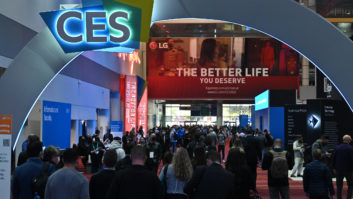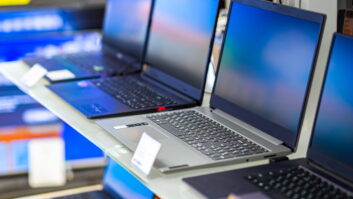New York – Many consumers will buy their camcorders, portable game players, and 6-megapixel digital cameras from cellular carriers if Qualcomm’s prognostications are correct.
To turn its prediction into reality, Qualcomm outlined plans to offer cellular chipsets supporting such multimedia capabilities as DVD-quality recording and playback, six-megapixel digital still imaging, sophisticated 3D graphics acceleration for game playing, and hifi stereo recording and playback. The first such convergence chipset will be available in sample quantities in the first quarter of 2005 for phones operating on GSM/GPRS and CDMA2000 1xEV-DO (Rev. A) networks. Chip samples for GSM/GPRS/EDGE and W-CDMA phones will be available in the fourth quarter of 2005.
When these functions are incorporated in phones, said Qualcomm CDMA Technologies Group president Sanjay Jha, carriers won’t have to subsidize handsets because “consumers will see the value,” especially when comparing them to the price of traditional handheld games, digital cameras, and digital videocameras.
“[The cellular] handset will be the dominant [handheld] convergence device,” he told reporters at a private briefing. Multimedia handsets that use the new Qualcomm chipsets and connect to a broadband data network represent “an important new class of devices,” he said.
Bringing core multimedia functions to cellular chipsets saves board space, reduces power consumption, and reduces costs, Jha explained.
The Qualcomm chipsets support:
-six-megapixel digital imaging with red-eye reduction (image sensors are separate).
—DVD-quality 30fps VGA recording and playback.
—a TV output to play DVD-quality video on a TV, and a TV input to record from a TV.
—4 million triangles-per-second 3D graphics acceleration for game playing.
—high-fidelity stereo recording and playback.
—assisted-GPS technology for imaging- and video-enhanced location-based services.
The chipsets also support connectivity to other devices via removable flash memory and hard-disk drives, Bluetooth, 802.11, USB, a standard TV interface, and high-speed MDDI (Mobile Digital Display Interface) for mobile devices.
Jha expects U.S. carriers to offer DVD-quality video recoding, messaging, and downloading in 2006 or 2007. He foresees such video features as DVD-quality video mail, video capture to record home movies on removable flash memory or internal hard disk drives, and video services such as downloads that could be played back on TVs in DVD quality. Carriers could offer multiple video “channels” in which custom pushed content can be stored locally on a handset for playback on demand. He also foresees a possible mix of push video services and streaming broadcast service.
Although phones will load up with multimedia features, Jha doesn’t expect battery life to be an issue. “You put the clock up only when you have to,” Jha said. “With a phone, 95 percent of the time, you don’t do much.”
“Digital power consumption is scaling so well,” he added, that color LCD screens and RF will be more important factors is depleting batteries than multimedia functions. “Talk time soon will no longer be the metric that matters. It will be application time,” including LCD screen use, he said. LCD displays, however, are “a problem that is still to be resolved.”
The Qualcomm chipset that supports GSM/GPRS/EDGE and W-CDMA also supports advanced W-CDMA technology called HSPDA (high speed downlink packet access), which in Qualcomm’s chipset will enable data downloads up to 7.2Mbps peak.
The 1X EV-DO (Rev. A) spec, in contrast, supports 3.1Mbps peaks to the handset and 1.8Mbps peak uploads from the handset.













